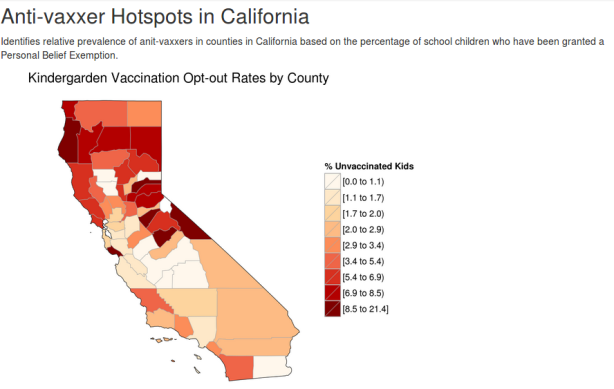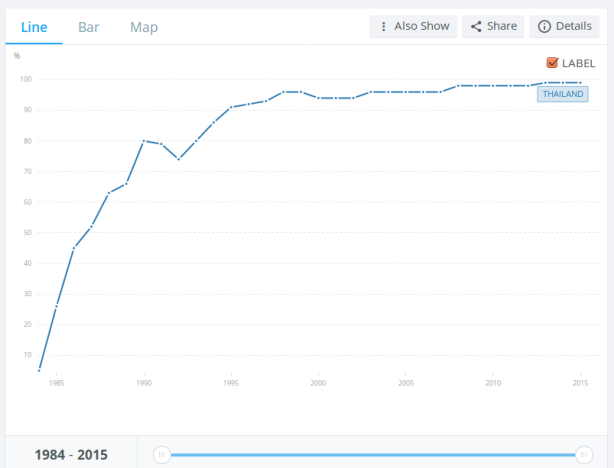Here is a blog post that expands on my mini tweet storm about measles becoming endemic again in the US due to a drop in children’s vaccination rates. I put the graphics and links all in one place so you don’t have to keep clicking through to other websites to see them.
This story comes from Arstechnica where they quote the researchers who point at that a drop of 5% in the MMR vaccination rate drop will triple the number of cases and be very costly in terms of public healthcare costs. The personal costs are pretty high, too. Quoting:
Measles, in particular, requires vigilant vaccination. The highly infectious virus can linger in the air for hours after a cough or sneeze. Those sickened develop high fevers, rashes, inflamed eyes, and cold-like stuffy nose and cough. But people can spread the infection days before those symptoms appear. About 30 percent develop complications, such as pneumonia, brain swelling, and blindness.
So there’s that.
Since I am originally from California I was curious about how prevalent unvaccinated kids are these days in my home state. A while ago I did an analysis of data from the California Department of Public Health on the percentage of kindergarten children who had been granted “Personal Belief Exemptions” in 2015. Here is a map of California with counties colored according to percentage of unvaccinated kids.

Note that it looks like most of the northern half of the state suffers from this risk. The county names are not listed in the graphic but the 20 with the lowest vaccination rates are shown on my Rpubs page at http://rpubs.com/markdg/AntivaxxerHotspots. Nevada county leads with 21.4% unvaccinated, followed by Mariposa county at around 15%. Amazing in this day and age, like a third world country in this respect.
Something odd I noticed when I was writing this post is that the data that I used in this analysis has been moved or removed from the CDPH website. So the link to the source on my Rpubs page is now broken. The CDPH website does have some summary data that shows vaccination rates overall are climbing back up. Here, for example they say that overall vaccination rates went from 93% in school year 2015-2016 to 96% in 2016-2017. So that’s good news, although still a little low. I haven’t spent the time to search for the raw data; perhaps it is there somewhere.
The developing country of Thailand, where I live, hasn’t lost its mind. The vaccination rate for measles has risen rapidly since 1984 and was reported at 99% in 2015. Here is a chart from World Bank based on the data they have collected.

Vaccination Rates of Children Age 12 – 23 Months in Thailand
From http://data.worldbank.org/indicator/SH.IMM.MEAS?locations=TH on 27 July 2017.
Maybe it is because so many people in Thailand can still remember the horrible days before nearly everyone received vaccinations.